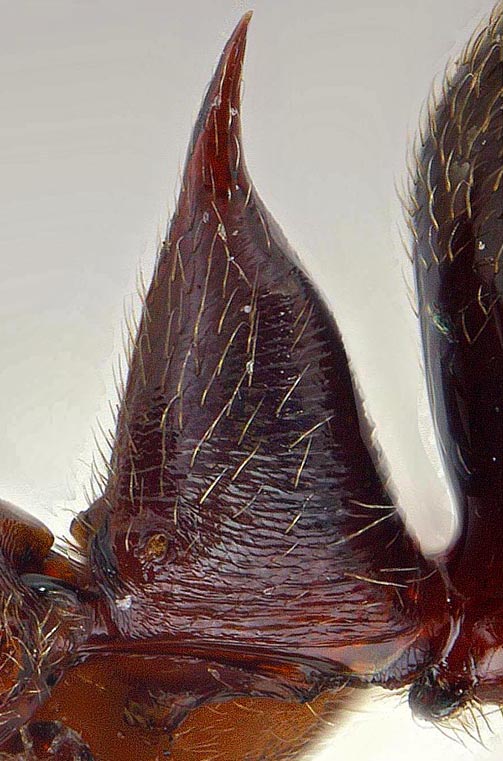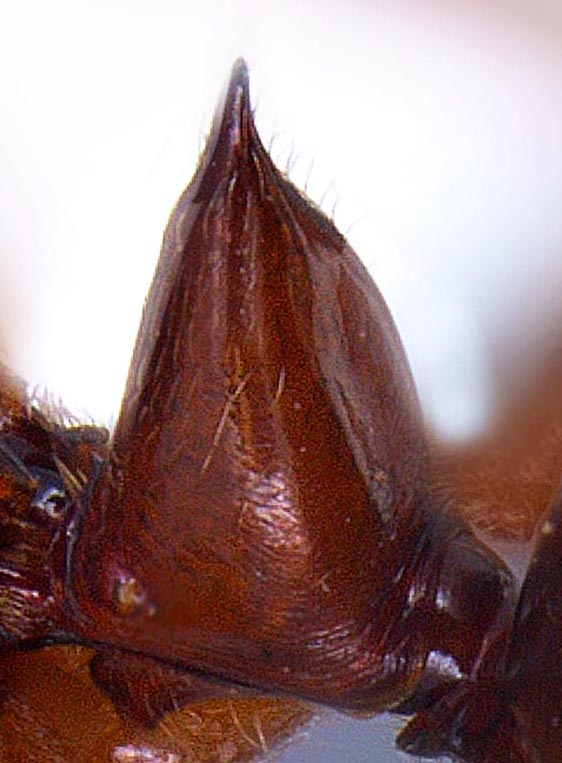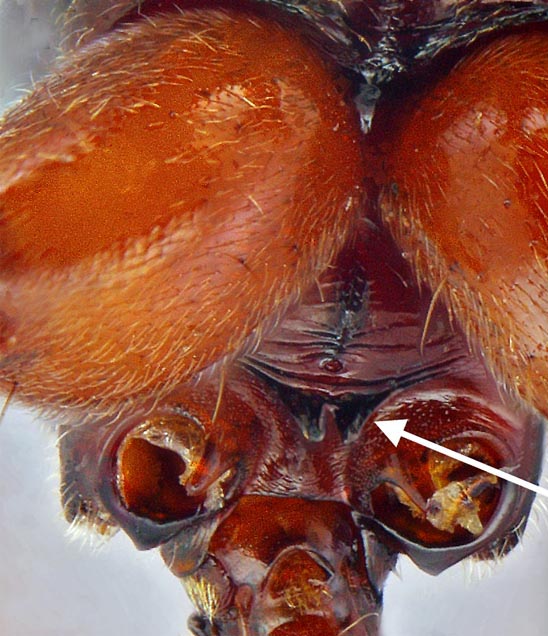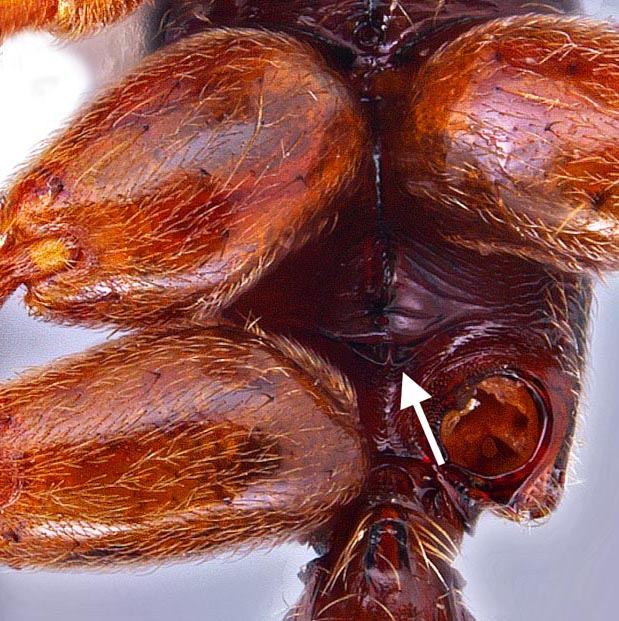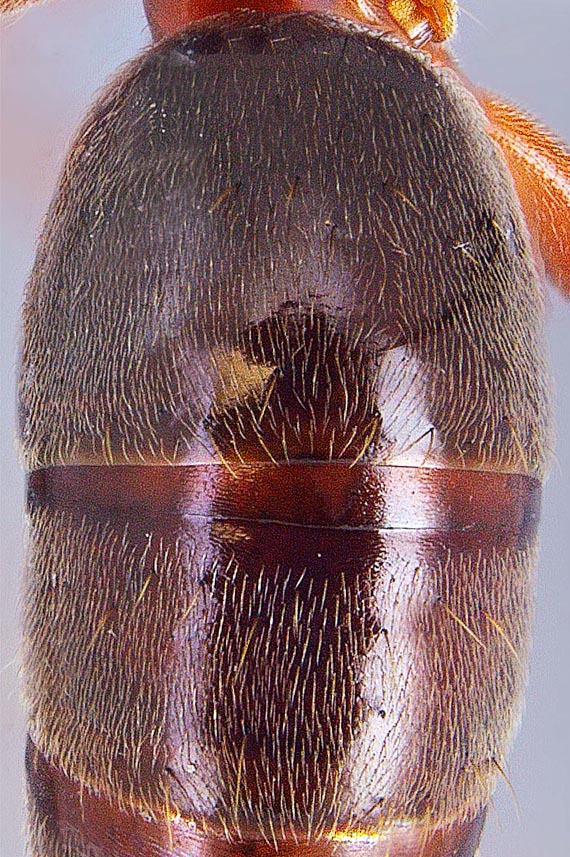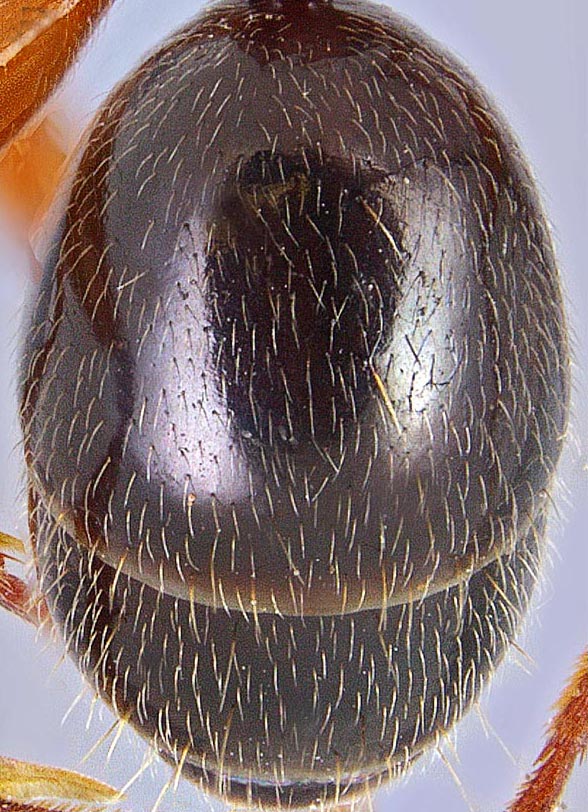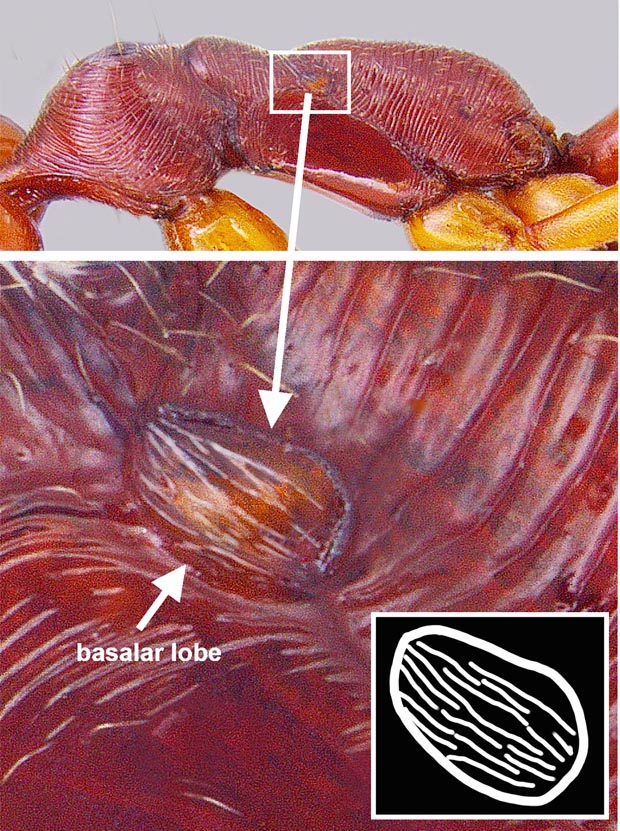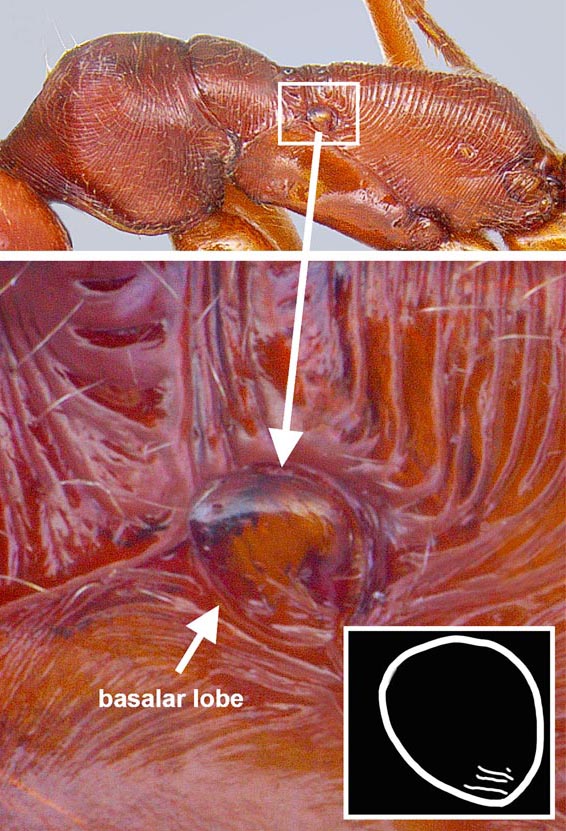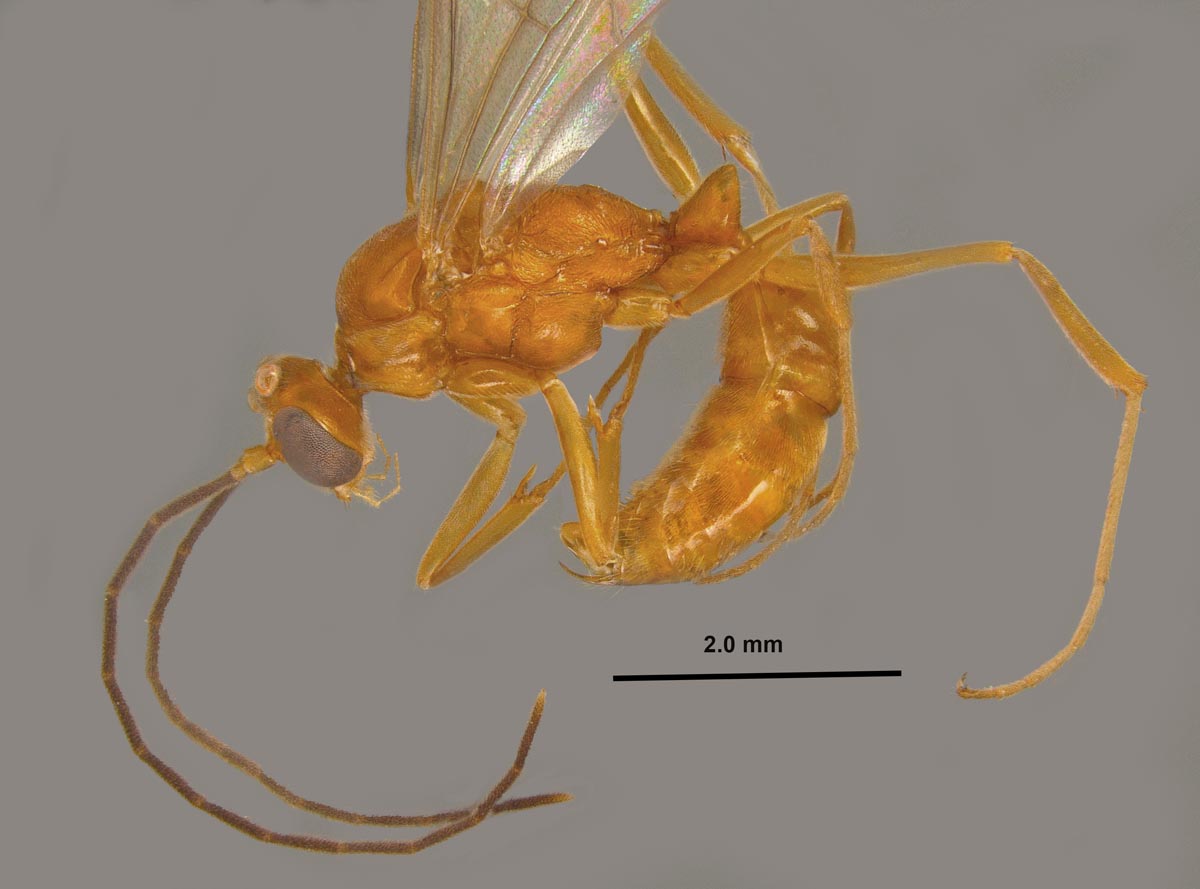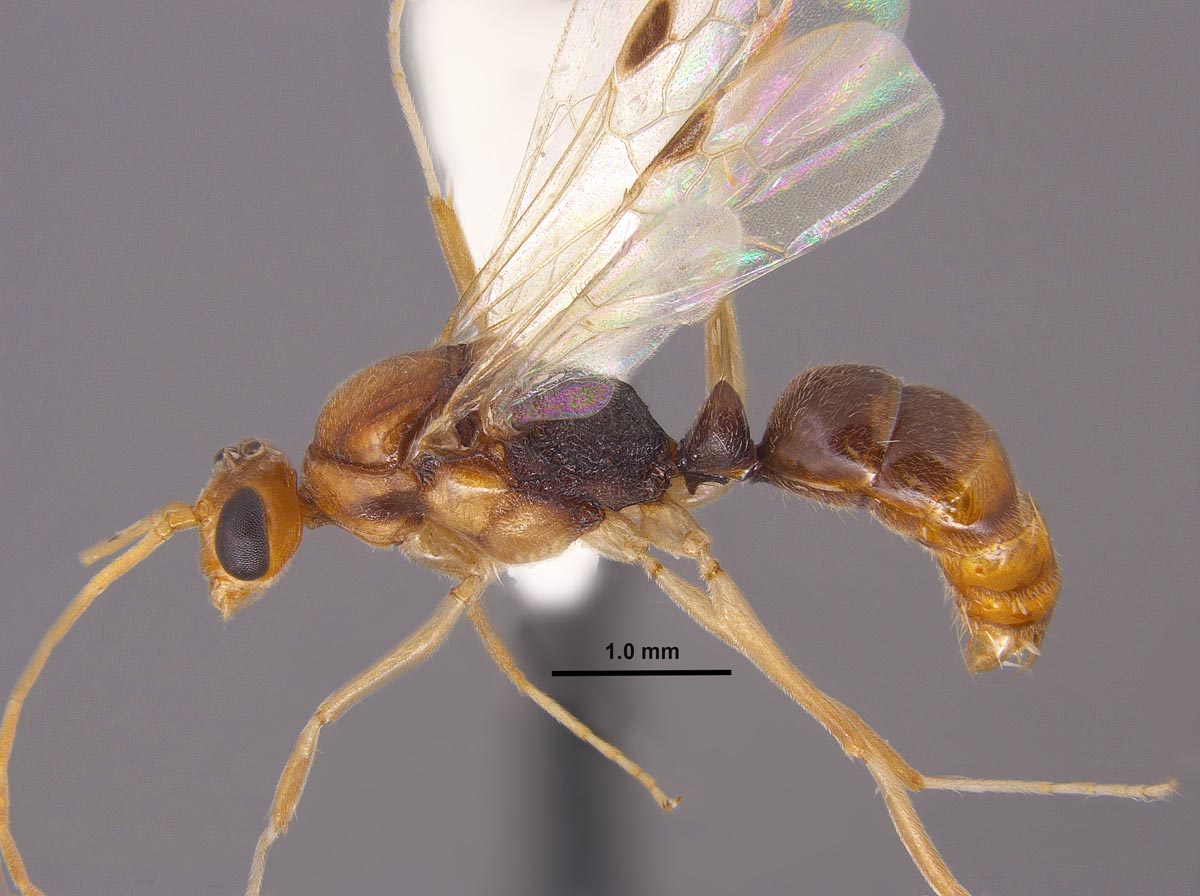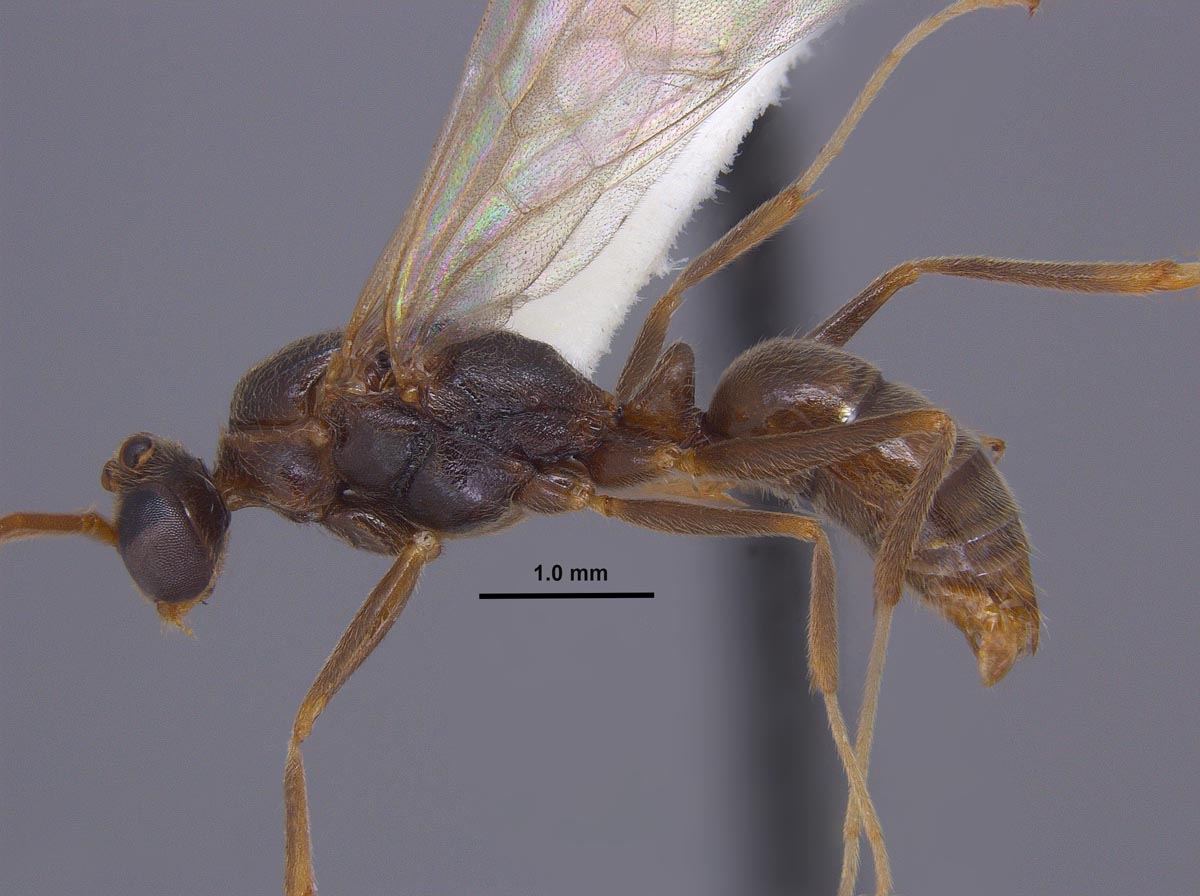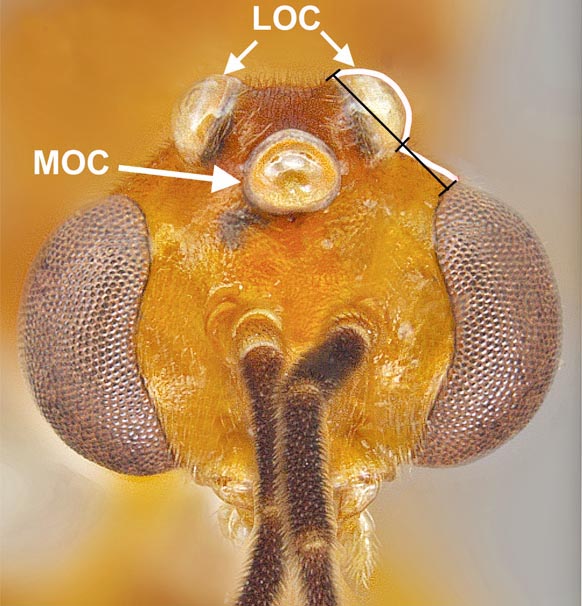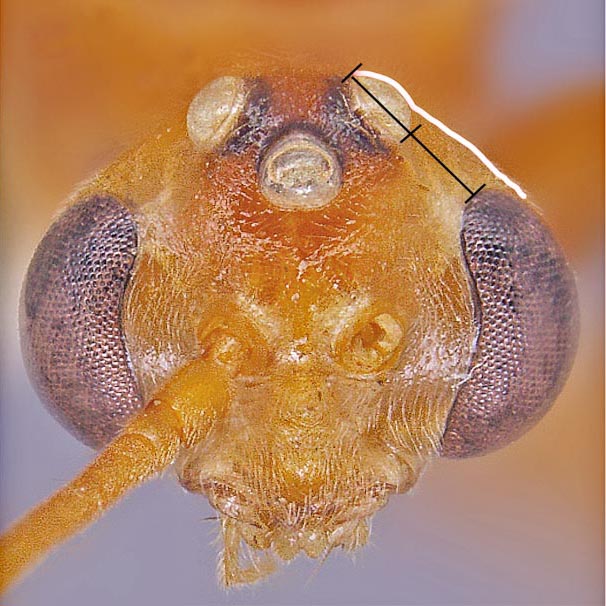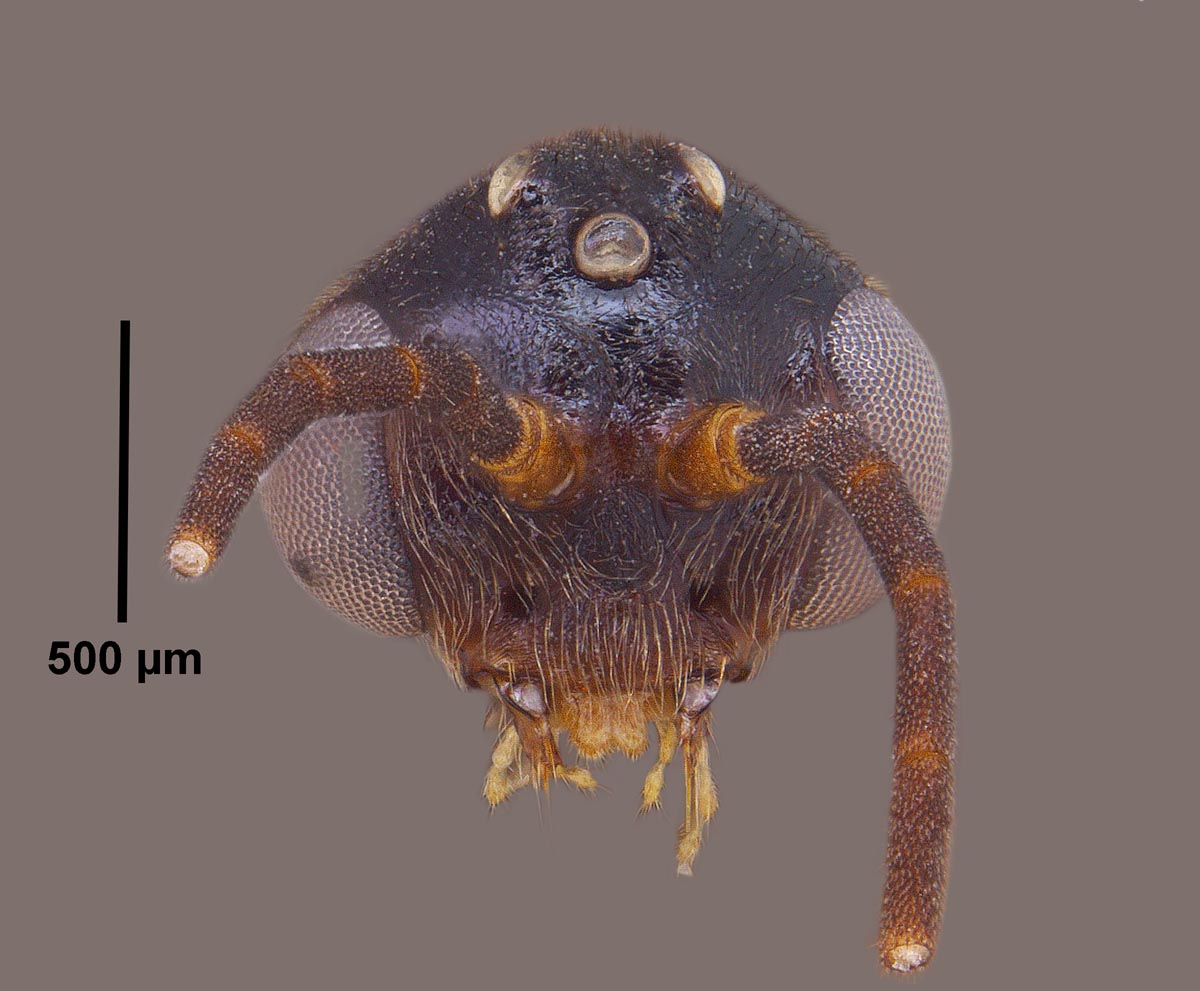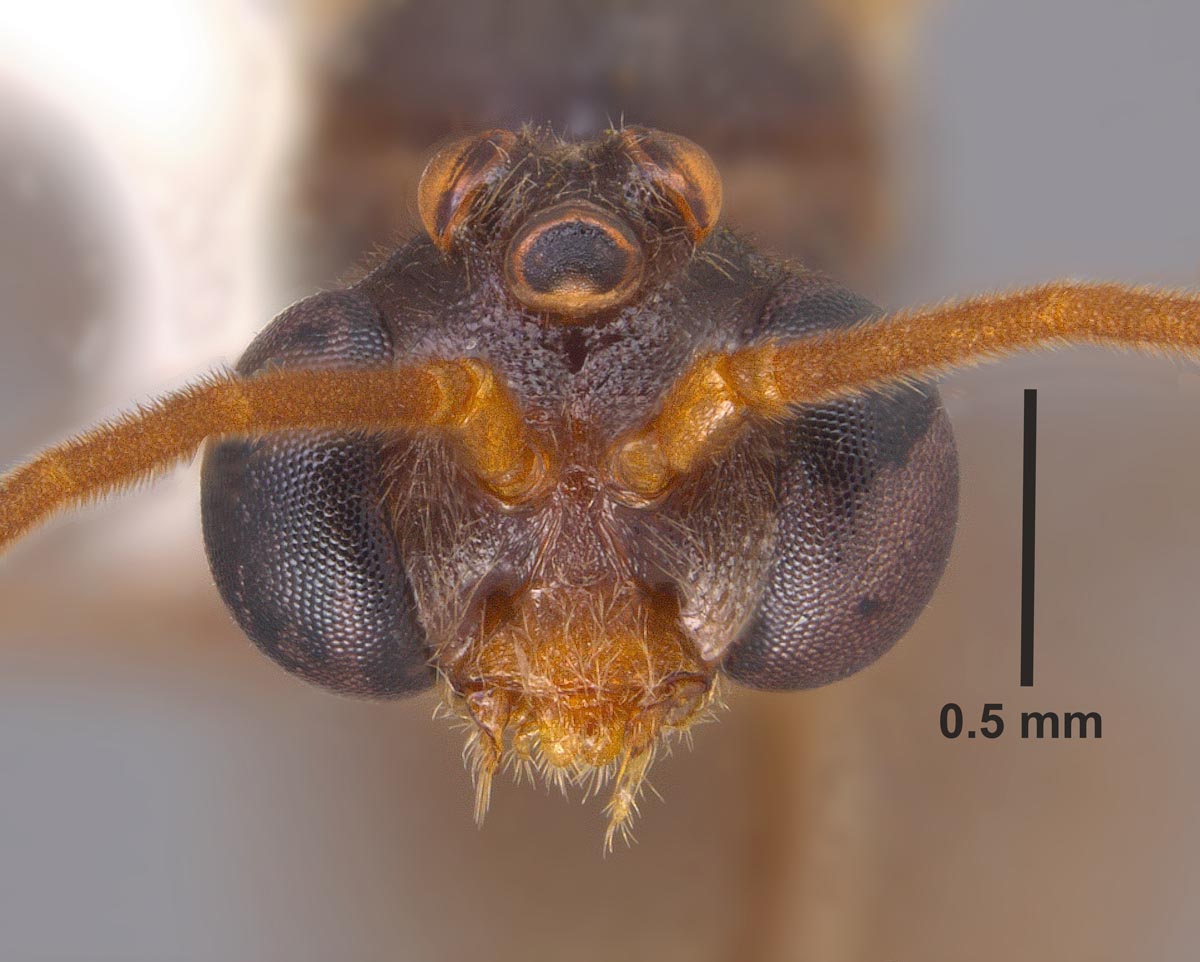Key to Odontomachus species in the southeastern United States (adapted from Deyrup and Cover 2004; MEM collection records, and personal communication from Mark Deyrup) Workers and queens |
|||
| 1 | Petiole with conspicuous transverse striae | ...2 |
|
| Petiole smooth, lacking transverse striae, or with at most, only a few feeble striae basally | ...3 |
||
| 2(1) | Large, HL usually greater than 2.5 mm, WL usually greater than 3.0 mm; transverse striae on petiolar node conspicuous anteriorly, laterally, and posterobasally, but reduced or lacking on remainder of posterior region; metasternum with paired, elongate, slender, spiniform processes present (Gulf Coast) | ||
| Smaller, HL usually less than 2.5 mm, WL usually less than 2.75 mm; petiole with coarser striae on the posterior side, finer striae basally on the sides and front; metasternum with notched ridge, but not projecting as elongate spiniform processes (central to southern FL) | |||
| 3(1) | Hairs on first tergite of gaster extremely fine and dense, spaces between hairs less than 1/3 as wide as length of hairs (native species, GA to AL) | ||
| Hairs on first tergite of gaster sparse, spaces between hairs at least 1/2 as wide as length of hairs | ...4 |
||
| 4(3) | Basalar lobe striate (only known from sand ridges in south-central peninsular FL) | ||
| Basalar lobe smooth (Mexico, SW US into LA) | |||
| Two other species, O. bauri and O. insularis, are possible in the Southeast. Odontomachus bauri is native to Central and South America, but has been reported from the West Indies, and O. insularis is also known from the Caribbean region. Odontomachus bauri is a large, dark reddish-brown species with long scapes and with the entire posterior face of the petiole having conspicuous transverse striae. The longer scapes and larger size of workers differs from O. ruginodis, and the entire posterior face of the petiole being covered with transverse striae should separate O. bauri from O. haematodus. Odontomachus insularis is most similar to O. clarus and O. relictus, but differs by having the petiolar spine drawn out into a long, slender spine. | |||
Key to Males |
|||
| 1 | Color entirely yellow to orangish-yellow | ...2 |
|
| Body with at least some areas dark brown to blackish-brown | ...3 |
||
| 2(1) | Ocelli large, maximum diameter of each ocellus greater than distance between lateral ocellus and compound eye (OL ≥0.22 mm; OES ≤0.16 mm); lateral ocelli conspicuously projecting beyond posterior border of head in full-face view (GA through MS) | ||
| Ocelli smaller, maximum diameter of each ocellus less than or equal to distance between lateral ocellus and compound eye (OL ≤0.20 mm; OES ≥0.20 mm); lateral ocelli indistinctly projecting beyond posterior border of head in full-face view (common in along Gulf Coast) | |||
| 3(1) | Entire body brown | ...4 |
|
| Head and thorax yellowish with some brownish infuscation, propodeum dark brown, petiole and gaster brownish, and appendages yellowish (southern FL) | |||
| 4(3) | Ocelli small, diameter about two thirds of distance between lateral ocellus and eye; lateral ocelli indistinctly projecting beyond posterior border of head in full-face view (southwestern species to Louisiana) | ||
| Ocelli large, maximum diameter of each ocellus greater than distance between lateral ocellus and compound eye; lateral ocelli conspicuously projecting beyond posterior border of head in full-face view (only known from sand ridges in peninsular south-central Florida) | |||
| As mentioned earlier, O. bauri and O. insularis, are possible in the Southeast. Males of O. bauri are yellowish with three broad, dark stripes on the dorsum of the pronotum. Males of O. insularis are black with a dark brown gaster. | |||


